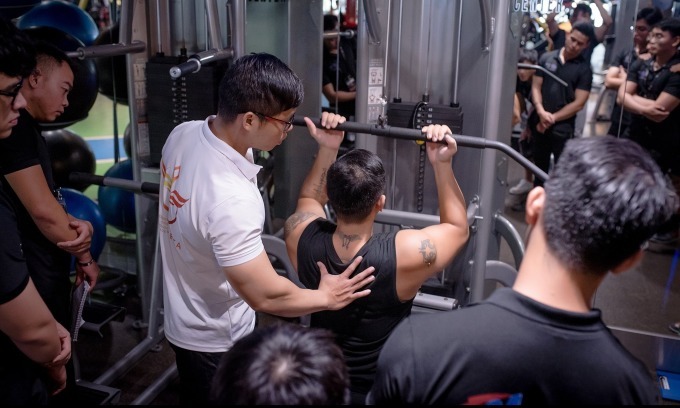Fit24, a high-end gym chain based in Ho Chi Minh City, closed earlier this month, complaining of financial difficulties as consumers cut back on gym spending and new brands faced fierce competition.
The roughly 4,000 members of GetFit Gym & Yoga, another upscale chain in Ho Chi Minh City, were surprised to receive notice that all three of its gyms would cease operations.
The two companies reopened a month later after receiving capital injections from shareholders.
Several other brands, including 25 Fit, Diamond Fitness Center, and S’Life Gym, have scaled back operations since last year, and several other well-known chains have gone out of business or slowed their expansion. .
According to market research firm Vietdata, Vietnam’s fitness industry has grown by an average of 20% over the past 10 years..
Ken Research, an Indian consulting services provider, said the industry’s expansion was mainly driven by rising incomes and growing health consciousness among Vietnamese people.
Nguyen Huu Phuc, co-founder and director of Getfit Holdings, which owns the Getfit Gym & Yoga brand, decided to turn his gym into a full-fledged fitness chain before the COVID-19 pandemic hit. , said he had hoped that exercise would help. It will be a daily routine for young people for the next 15 years.
But after a period of rapid growth, the chain is now challenged to maintain its share of the fitness market, he said.
Rising costs are one of the problems plaguing gyms. Retail rents are rising in Ho Chi Minh City, eating into the profits of most service businesses.
Many major food and drink brands have been forced to close some of their stores in prime locations as shophouse owners preferred to keep properties vacant rather than reduce rents. .
Rents for office buildings that are potential sites for gym chains are also rising in some areas of Ho Chi Minh City, according to a third-quarter market report by real estate consultancy Savills.
Dane Fort, CEO of Fitness & Lifestyle Group Vietnam, which owns the California Fitness & Yoga gym chain, said operating costs, including rent, equipment and labor costs, have also increased.
|
Nguyen Huu Phuc (R), co-founder and director of Getfit Holdings, during a discussion with employees in 2020. Photo courtesy of Phuc |
On the other hand, revenue from fitness services is decreasing. According to Vietdata, industry revenue has fallen by 60% since 2019, when the pandemic began.
Hook said Getfit’s revenue is down 45% from its pre-COVID-19 peak and business has not recovered as much as expected.
“Previously, customers could easily spend VND10-15 million (US$400-600) on annual membership fees, but now many of the top players in the market can attract customers for as little as VND5 million. I am having a hard time.”
As consumers tighten their wallets, existing chains must compete with each other and with new brands that offer similar or better service at lower prices.
Instead of signing up for a year, members can now take a variety of classes and have access to equipment, air-conditioned rooms and a sauna 24/7 for between VND 300,000 and VND 500,000 per month at the new facility.
One such chain, The New Gym, currently has 13 gyms across the country and offers monthly memberships for VND300,000.
Ways Station’s 10 stores in the same price range are also open seven days a week and are offering a “buy three months, get one month free” promotion.
Minh Nhat, who has been training at The New Gym for four years, said, “Ways Station provides high quality equipment and allows members to bring their own personal trainer (PT). Members of other chains are also congregating at Ways Station.”
Chain stores also have to compete with a growing number of freelance PTs.
Ly Ky, who worked as a trainer at a major gym before going freelance over a year ago, says many PTs at some top chains decide to work independently to avoid the pressure of sales targets. He pointed out that there is a shift.
Gyms are bleeding members because customers typically follow their trainers when they leave, he said.
 |
|
Training for personal trainers held at Fit24 gym in April 2021 Photo provided by the company |
Consumers also have more fitness options, with many opting for community-based sports and martial arts like marathons, pickleball, and trekking.
Some wealthy individuals turn to more expensive services, such as private gyms, which provide a more personal and professional training environment.
Industry insiders said changing exercise habits and preferences mean gym chains will struggle to survive if they don’t quickly adapt to consumer needs.
Mr Dane said the key to success was flexibility and a future-oriented strategy.
He said chains need to train professional staff to provide more personalized and diverse services because members are no longer satisfied with traditional gym services.
In addition to training space, it is also possible to add healthcare and diagnostic services, as well as provide useful apps for members.
He said the challenges faced by the industry are inevitable given the economic situation. “But now is the time to reflect and make a breakthrough.”
